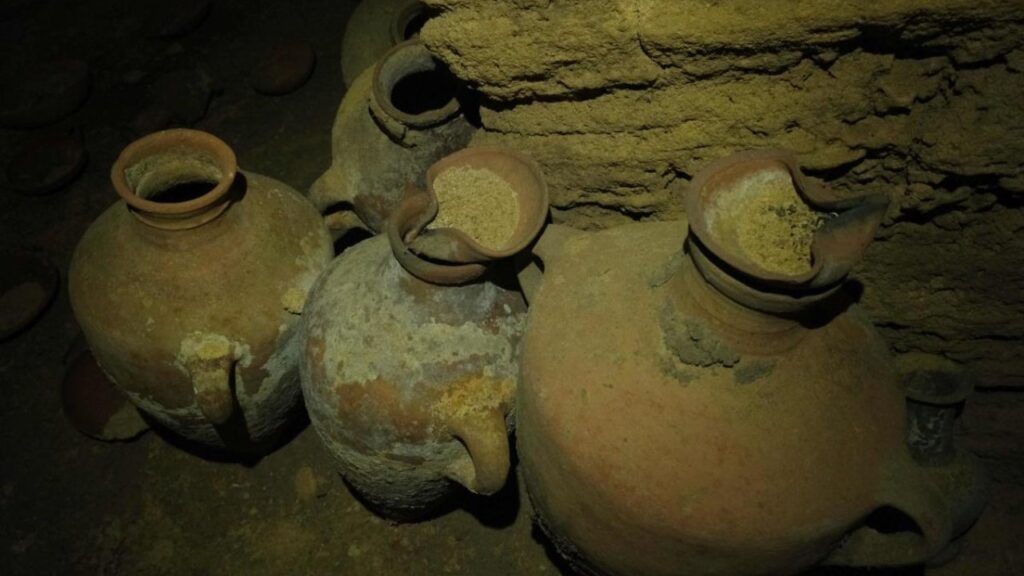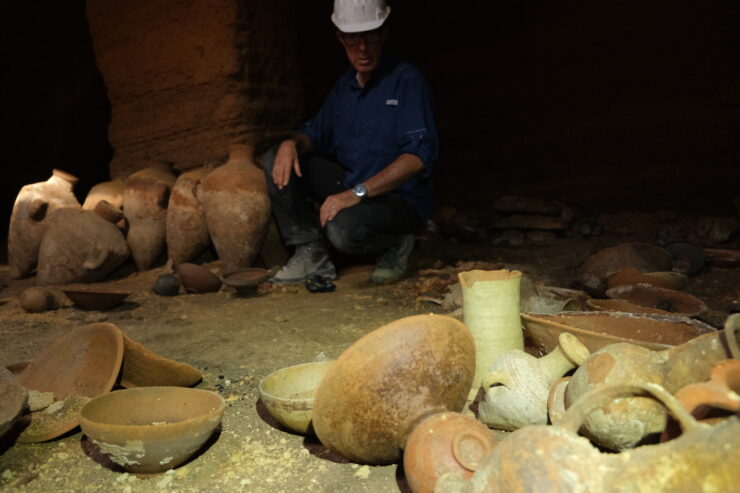The Israel Antiquities Authority reported on Sunday that an intact ancient burial cave, which is rare in and of itself, has been unearthed on the southern Israeli coast.
A tractor moved a rock during construction for a new park by Kibbutz Palmahim and Dror Czitron, a park inspector for the Nature and Parks Authority, was the first person to look at the burial in more than 3,300 years.
Imports from Cyprus attest to trade links dating back 3,300 years, maybe evading the taxation of the major ports Jaffa and Ashkelon.
Eli Yannai, a specialist on the Bronze Age at the IAA, affirms that the grave had not been looted in the literal sense of the word. After all these years, the first robber may have actually been the second since there are signs that someone entered the cave after it was discovered, poked about, and stole some artifacts while leaving the majority behind, according to the IAA. It continues that it is vigorously investigating.
According to the news of Haaretz, archaeologists discovered intact pottery and bronze vessels, exactly as they had been placed into the tomb in the 13th century B.C.E. : amphorae and bowls of various types and forms, cooking vessels, and oil lamps. These items were among the grave goods the modern thief left behind, intended to serve the deceased in the afterlife. Additionally, they discovered smaller vessels that had contained trace amounts of priceless materials and had apparently come from Tyre, Sidon, and other ports in Lebanon.
The researchers also discovered weapons of war, including bronze arrowheads and spear tips that appear to have been used in conjunction with organic materials that could not withstand the ravages of time.
Yannai says, “It’s the find of a lifetime, It’s like a set from ‘Indiana Jones’ – a cave with vessels on the floor that haven’t been touched for 3,300 years. The period is Late Bronze Age – exactly the time of the notorious pharaoh, Ramesses II … The cave provides a full picture of burial traditions in the Late Bronze Age.”
Ramesses II was the third pharaoh of the Nineteenth Dynasty of Egypt. Along with Thutmose III he is often regarded as the greatest, most celebrated, and most powerful pharaoh of the New Kingdom, itself the most powerful period of Ancient Egypt. Ramesses II is credited with extending ancient Egypt’s influence as far as contemporary Sudan and northeastern Syria. In other words, the burial cave was used as a burial site during the time that ancient Egypt governed the region that is now Israel.



The square-shaped burial room was carved into the bedrock, and a pillar held up the chamber’s ceiling. It appears to have served a family or clan, unlike (slightly earlier) tombs discovered close to Israel’s southern coast, according to Yannai. Not much more can be known about the bodies due to their poor preservation, which prevents DNA extraction and analysis, in contrast to the grave site itself.
Yannai believes it is reasonable to suppose that they were locals who resided along the coast and who, based on some of the burial goods, engaged in active trade with Syria, Lebanon, and Cyprus.
We do not, however, know what settlement they may have been connected to. Yannai speculates that it might have been lost to the sea over time. All along the coast, people were sailing out from makeshift “pirate” ports – notably at the mouth of the Soreq River where it pours, or trickles these days, into the Mediterranean Sea.
He says it makes sense that lesser traders would try to avoid utilizing the ports of the large cities, Jaffa and Ashkelon, because those ports were the province of the great traders and would overcharge them. The inhabitants of this uninhabited burial cave may have been “pirates” of that sort, or at the very least had items from them to carry to the afterlife.
He continues, “Some of the victims had been lying on their backs; others seemed to have replaced earlier remains that had been moved.” In any event, it appears that the cave was inhabited for many years.
As stated, the deceased’s name and affiliations are now unknown. However, Yannai believes that analyzing the organic residue in the vessels could shed light on at least one mystery: what they liked to eat.

Top site ,.. amazaing post ! Just keep the work on !